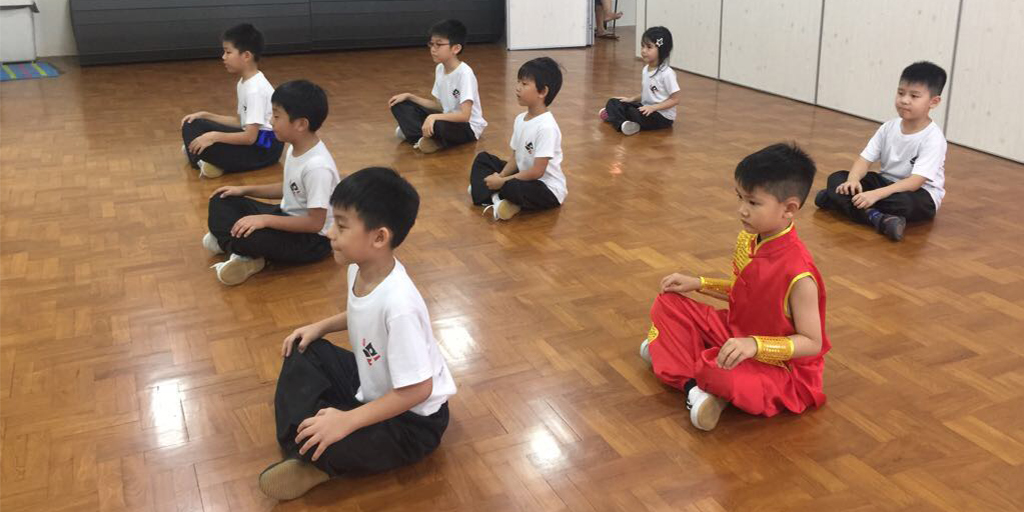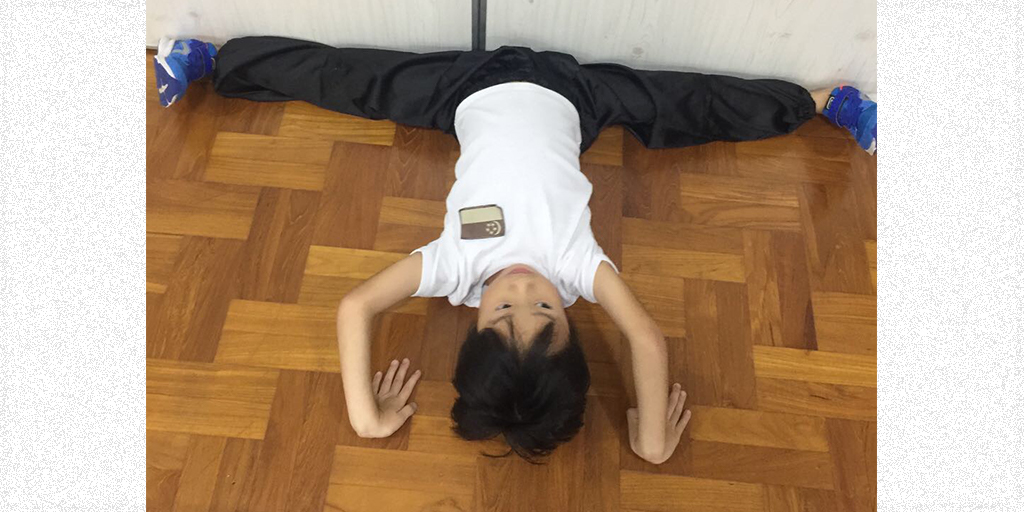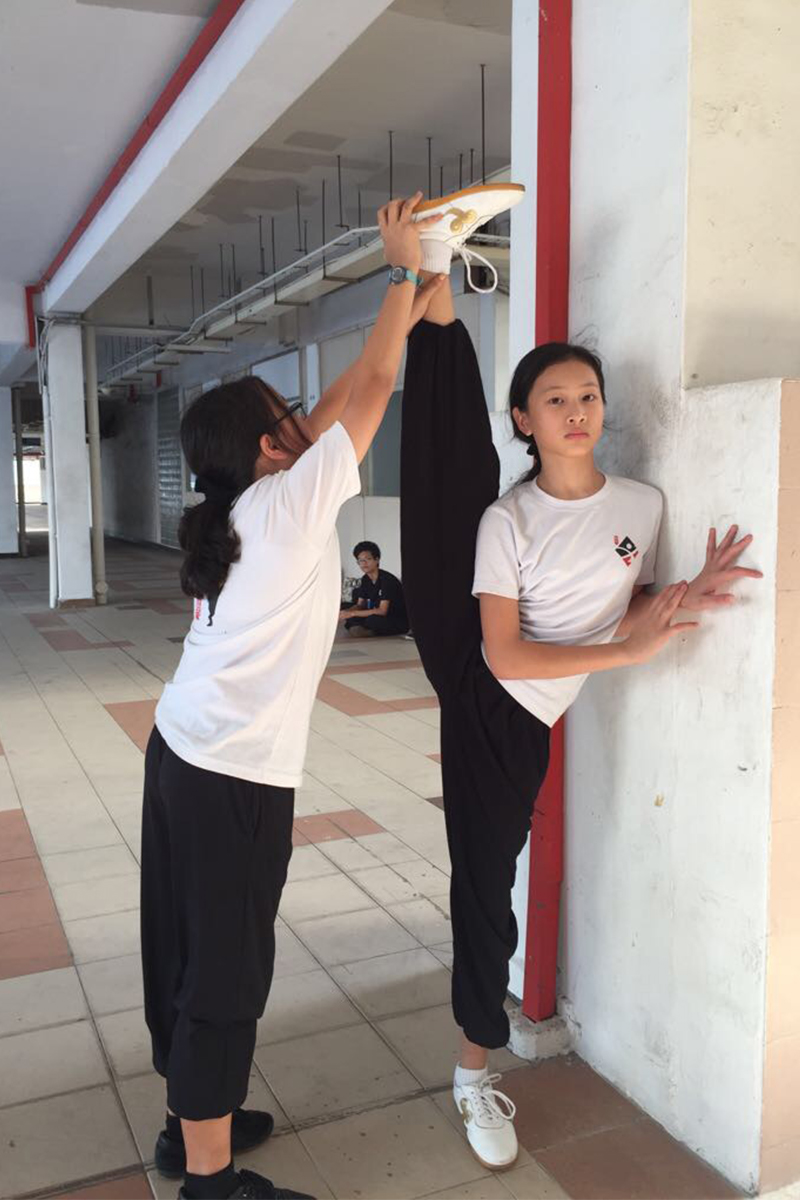儿童习武的好处
The Benefits of Children Learning Wushu
BY 陈美郿 Sep 12 2017
孩子为什么学武术?

很多家长耽心孩子学武术会爭强好斗,爱跟人打架。其实这是错误的思维。
学武术不但能增强体质,更重要的是学会自律,培养气质,锻炼坚韧不拔,刻苦耐劳的毅力。
除此之外,还能学习一技之长,掌握一定的运动技能,把武术当做终身锻炼的运动项目,养成健康的生活方式。
自从 2004 年教育部正式将武术列入学校课外活动以后,学员可以参加教育部举办的常年校级武术比赛; 常年全国武术锦标赛;国际赛等。并且凭着比赛的优异成绩,以特别才艺加分,可以选读优等学校或报读直通车学校 (DSA)。
孩子们学什么?
1 .学礼, 习德
有礼貌的孩子人见人爱。礼貌是基本的待人处事方式,见到长辈,会鞠个躬问声“好”。
学武术第一节课必须先学“抱拳礼”,以后课前课后都必须给老师行“抱拳礼”,这就是古人传的“未先学艺先学礼”的礼仪。
从排队,团体活动中学习谦让,互助,包容,团结,友爱和与人和谐相处,尊师重道,敬老尊贤,这也是古人教导的“未先习武先习德”的德育。
抱拳礼意义如下:
右拳左掌,代表左文右武,学武之人必须文武兼备。左掌四指合拢,代表德,智,体,美,拇指弯曲,代表虚心学习,右拳握实,代表团结一致。右拳在下左掌在上,两手合抱,代表谦卑忍让不闹事,五湖四海是一家。
2. 学形态
目前的孩子都是低头一族,走着,站着,坐着,吃着,躺着都是手不离机(手机),养成未老先驼的形态。
在学习武术的过程中首要内容是形体的调整。从小养成行,站,坐的好习惯,站要直立,坐要端正,走要挺拔,时刻保持姿势中正端庄。
3. 学自律
在的孩子独立自理的能力相对的差,孩子每天的生活小事 都由父母或女佣代劳,包括倒杯水,穿鞋袜等。有一次,一位九岁的孩子上武术课时,鞋带松了,教练叫他把鞋带系绑好,他一面系一面哭,了解之下,原来不会系鞋带,教了他以后,叫他回家练习,结果下堂课很自信的告诉老师“我学会系鞋带了”。
老师要求孩子上课要准时,服装一致,学听口令,学整队,要求动作的规范,无形中孩子也学会了自我约束和自我要求的能力。
4. 学习刻苦,坚韧不拔的精神
初次扎马步是非常难受的,而马步却是武术不可或缺的基本功,从一个简单的马步功就能考验孩子的忍耐力和意志力。
武术的每一个动作,踢,打,摔,跌,腾,挪,闪,战等都必须经过千锤百炼,锲而不舍才能掌握自如,要铁棒磨成针,必须有坚强的意志力和恒心。
5. 建立自信
技术成熟的学员可以参加教育部举办的常年校级武术比赛; 常年全国武术锦标赛;国际赛等。比赛是对学习效果的检验,也是对新学习目标的确立。通过比赛肯定自己学习的掌握能力和水平,加强信心,因此,比赛是学习不可缺少的一个重要环节。
6. 学习中华文化
孩子除了学习武术,增强体魄之外,也要求学习中文,以中华文化为底蕴,才能更容易理解中华武术的内涵。
故此学文习武,“练武术,颂弟子规”是新英武术培训中心的初心, 提早将中华优秀传统文化融入儿童青少的心灵里,希望每个孩子都是个儒雅,文武兼备,德艺双馨的未来栋梁。
Why should children learn martial arts?

Many parents worry that sending their children to learn martial arts will make them more aggressive and loves fighting. In fact, this thinking is incorrect.
Learning martial arts not only can enhance their physical fitness, more importantly, they will learn to be self-disciplined, cultivate better temperament, resilience and perseverance.
In addition, they can learn a sport and a lifelong skill to develop a healthy lifestyle.
Since the Ministry of Education officially classified martial arts as a school extracurricular activities in 2004, students can participate in the Ministry of Education organized annual school martial arts competition; national martial arts tournament; and the international competition. And with the excellent results at these games, student with this special talent can earn additional points to choose a superior school or enrol in the integrated schools (DSA).
What did the children learn when practising martial arts?
1. Courtesy and Ethics
Courteous children are lovely kids. When they meet the elders, they will bow and greet the elders.
The first lesson in Martial arts is to learn the "Baoquan Greeting". At the beginning and end of each class, the student must greet the teacher using the "Baoquan Greeting", which is the ancient tradition and etiquette.
The moral education learnt includes queueing to other group activities to learn humility, mutual help, tolerance, unity, fraternity and harmony with others, respect for teachers, and respect for the elderly.
The meaning of the Baoquan Greeting gesture is as follows:
Left palm represents civil and right fist represents martial. A martial art practitioner need to be both civil and martial. Left palm four fingers represent ethics, wisdom, body and beauty. The bent thumb represents modesty in learning. Right fist represents unity. Right fist resting in the left palm, represents humility and patience without trouble and signifies brotherhood of mankind.
2. Physical Posture
Currently, our children are a Bow-headed tribe. Be it walking, standing, sitting, eating or lying, they are always bowing their heads, fully addicted to their cell phone.
In the process of learning martial arts, the first lesson is on the physical posture adjustment. Stressing the importance of keeping a good physical posture at all times in walking, sitting and eating and always maintaining a dignified posture.
3. Independence
Nowadays, our children’s ability to take care of themselves independently is relatively poor. This includes simple daily activities like pouring a glass of water, wearing shoes etc. This is due to the over-protective care of today’s parents.
The teacher teaches the child to be punctual, wear uniform clothing, learn to listen to given instructions, and learn to work in teams. Indirectly, the children also learned the ability to be self-restraint and independent.
4. Willpower, endurance and perseverance
The first basic stance to learn in Martial Arts class is to stand in the horse stance. This is a tough and tiring exercise. The horse stance is the very fundamental basic exercise in Martial Arts. This exercise will train the child’s endurance and willpower.
Martial arts’ exercises always include kicks, punches, fall, jumps, duck etc and these movements have to be repeated until the child master them. This will build the child’s willpower and perseverance in the process.
5. Self confidence
Trained students can participate in the Ministry of Education organized school martial arts competition; annual national martial arts tournament; and international competition. Participation in these competitions is a good test of the child’s skill level, but also serve to establish new learning goals. Through the competitions, one is able to know one’s skill level and strengthen one’s self confidence. Participation in these competitions is therefore an indispensable part of learning and progress.
6. Study Chinese culture
In addition to learning martial arts to enhance physical fitness, the children also get to learn Chinese and Chinese culture. With this, the child will be able to understand and appreciate the profound essence of Chinese martial arts.
Therefore, in the study of martial arts, "learn martial arts, recites disciples ethics" is the fundamental principles upheld by Xin Ying Wushu Training Centre, to promote early learning of Chinese traditional culture into the hearts of our young children.
I hope every child would progress to become a refined, civil and martial trained, future pillars of our society.





